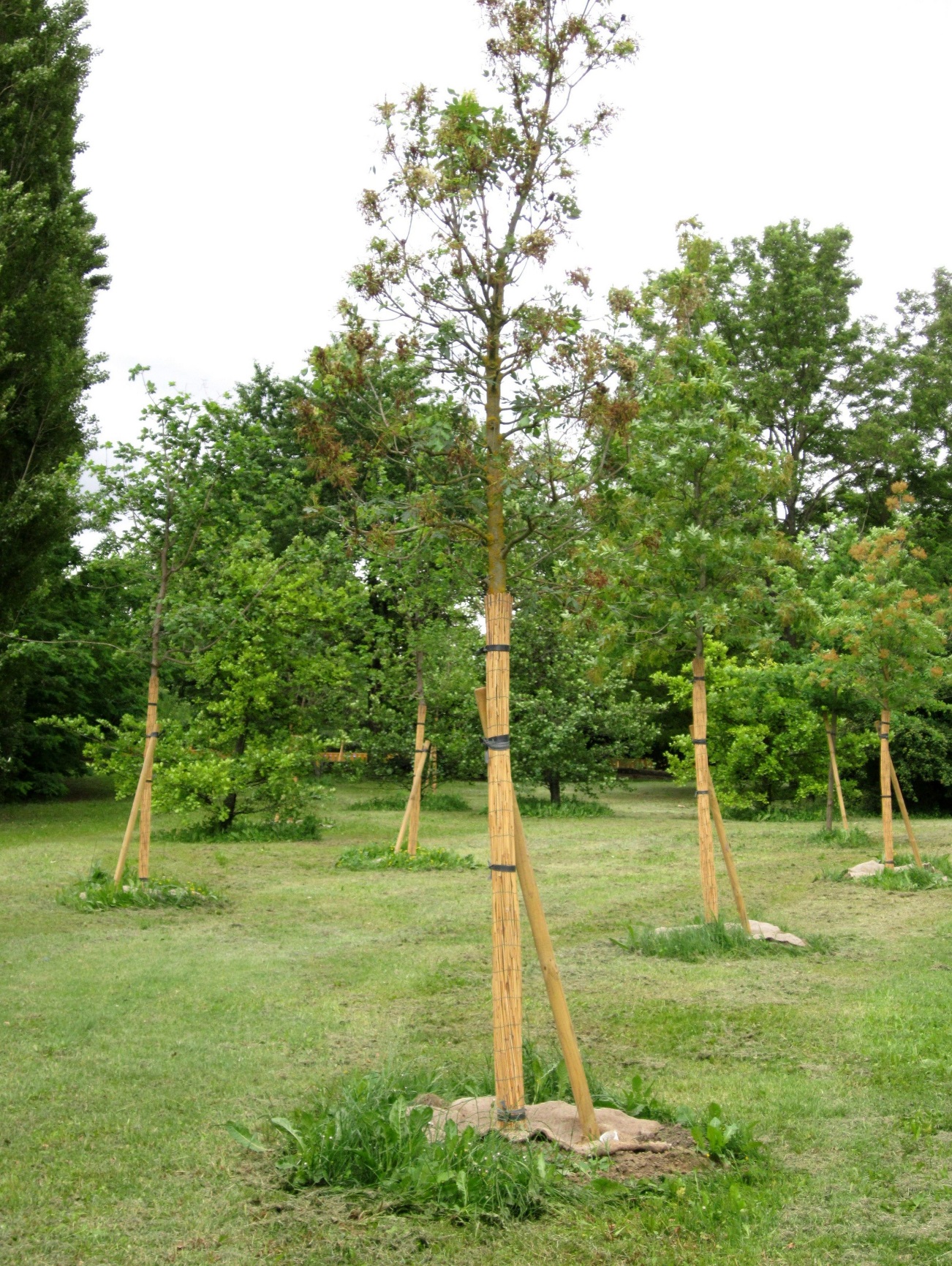The city decided to create the ‘green areas inner-city agreement’ (GAIA) based on a public-private partnership model to finance tree planting. Trees can provide necessary cooling during heat waves through evaporation and transpiration, which creates a natural air conditioning effect. Consequently, tree foliage can help to reduce overall temperatures in the city by 4.5 C. The planted trees increase the number of areas with shade in the city and reduce groundwater withdrawals through their capacity of releasing water that they have extracted through their roots into the atmosphere. They also help to preserve vulnerable areas such as river banks and landslides areas through their roots. In addition, green areas can help to decrease air pollution in the city.
The GAIA mechanism is based on the idea to use financial compensation for the carbon footprint of businesses as a main driver for action. The financial compensation is used to purchase plants and maintain trees throughout the city. Participation of the town council and local businesses in the GAIA initiative is on a voluntary basis.
A business that is interested in participating in GAIA can request an easy-to-use tool from the project website. This tool allows businesses to calculate the quantity of carbon dioxide involved in their processes and services. Next the businesses can select the type of partnerships they would like to purchase to neutralize their carbon footprint. The basic partnership is the ELDER TREE PARTNERSHIP, which consists of purchasing 1 to 5 trees. This partnership entails a cost between € 200 and € 1,000. A company that purchases 6 to 20 trees becomes a MAPLE PARTNER. This partnership costs between € 1,200 and € 4,000. Finally, a company can purchase more than 20 trees and become an ELM PARTNER. The costs of this partnership are minimally € 4,200. The number of trees required to compensate the company’s carbon footprint is calculated according to the amount of carbon dioxide which will be absorbed. This is an indicative number; the company makes the final decision on how many trees it wishes to purchase to compensate its emissions.
The city of Bologna has developed clear guidelines that detail the different steps that need to be taken in the process and which party is responsible. The city identifies the cost components, approves the Protocol of Agreement, takes the initiative to start the planting works and pays the tree suppliers. The city also commits to providing a monitoring report every 6 months from the start of the partnership. The company needs to initiate the partnership by providing an expression of interest and sending its data to the city. Once the type of partnership is selected, the company is asked to sign the Protocol. With this Protocol the company agrees to buy the trees and finance the first 3 years of maintenance. A guideline has been developed within the project detailing these steps involved to aid other municipalities or authorities that want to implement the partnership in their own city.
The project was initially tested through 3 pilot areas; 116 trees were planted in the urban park Villa Angeletti, the industrial district Roveri and Palazzo D’Accursio, which is an area in the city centre. Several other green areas, such as urban parks, hillside parks and local recreational areas, have been selected for the GAIA project. In total 23 areas in Bologna were identified at the start of the project that together have a potential of planting 3,000 trees. They all belong to Bologna Town Council and meet a set of requirements: they need to enable trees to absorb carbon dioxide, have environmental value in terms of conservation of biodiversity and protection of the territory, provide a revitalization of the area and social value and have an appropriate geographic location.
At the same time, the GAIA project contributes to the climate adaptation objectives of the Bologna Adaptation Plan to increase the number of green spaces in urban areas and promote urban safety in the face of extreme weather events. Trees have the capacity to increase soil cohesion and therefore can help to prevent landslides and erosion from occurring. On June 4th 2014 the city council approved the signing of “Mayors Adapt”. Bologna was the first Italian city to join the initiative.
The project includes a study through which the shading capacity per tree was assessed. It also established the potential evapotranspiration values of tree species to ensure that a decrease of the urban heat island effect could be realised. These values have been published in a technical guidebook as part of the project. The GAIA project has been complemented by actions to improve emergency management and communication with citizens about heat waves. There are further developments with Bologna currently implementing a GAIA spin-off project for citizens called RADICI. This project is financed through crowdfunding.



